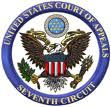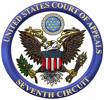Seventh Circuit Criminal Case of the Week: The Limits of Constructive Possession
 The Seventh Circuit had only one new opinion in a criminal case last week, but, fortunately, it was an interesting one. Under 18 U.S.C. § 922(g), it is a federal crime for felons to possess a firearm. Proof of the crime is easy enough when a felon is found actually carrying a gun. But what if the gun is nowhere on his person, but merely, say, in his home?
The Seventh Circuit had only one new opinion in a criminal case last week, but, fortunately, it was an interesting one. Under 18 U.S.C. § 922(g), it is a federal crime for felons to possess a firearm. Proof of the crime is easy enough when a felon is found actually carrying a gun. But what if the gun is nowhere on his person, but merely, say, in his home?
In practice, the federal courts have interpreted the law expansively so as to encompass a broad range of circumstances beyond actual possession. Thus, under the doctrine of “constructive possession,” a felon may indeed be convicted based on the discovery of a firearm in his home.
But, as the Seventh Circuit made clear last week in United States v. Katz (No. 08-2341), even the doctrine of constructive possession has its limits.

 Last week I had the honor of joining my colleague Janine Geske on her regular journey to Green Bay Correctional Facility, a maximum-security prison reminiscent of the prison in Shawshank Redemption. The prisoners at Green Bay run the gamut of serious crimes from sexual assault to drug distribution to armed robbery to homicide. Janine runs a three-day session on restorative justice, meeting with about twenty prisoners as part of a several-month program on the challenges and possibilities faced by these men. She has been running this program here for years as part of our Restorative Justice Initiative, and I was so excited to finally fit this in my schedule. Having done this trip last week and then spent the past weekend in services for Rosh Hashanah, I have had plenty of time to reflect on crime, punishment, repentence, and redemption. In retrospect, I don’t know that I could have timed this better. Suffice it to say, the experience was amazing.
Last week I had the honor of joining my colleague Janine Geske on her regular journey to Green Bay Correctional Facility, a maximum-security prison reminiscent of the prison in Shawshank Redemption. The prisoners at Green Bay run the gamut of serious crimes from sexual assault to drug distribution to armed robbery to homicide. Janine runs a three-day session on restorative justice, meeting with about twenty prisoners as part of a several-month program on the challenges and possibilities faced by these men. She has been running this program here for years as part of our Restorative Justice Initiative, and I was so excited to finally fit this in my schedule. Having done this trip last week and then spent the past weekend in services for Rosh Hashanah, I have had plenty of time to reflect on crime, punishment, repentence, and redemption. In retrospect, I don’t know that I could have timed this better. Suffice it to say, the experience was amazing. 